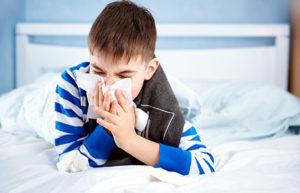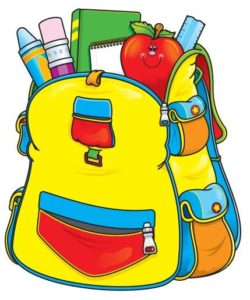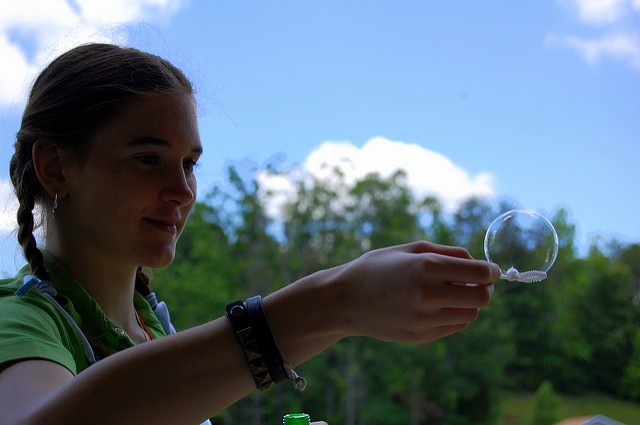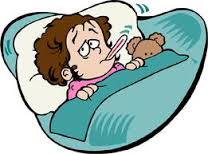 Sore throat and runny nose are usually the first signs of a cold, followed by coughing and sneezing. Most people recover in about 7-10 days. You can help reduce your risk of getting a cold: wash your hands often, avoid close contact with sick people, and don’t touch your face with unwashed hands.
Sore throat and runny nose are usually the first signs of a cold, followed by coughing and sneezing. Most people recover in about 7-10 days. You can help reduce your risk of getting a cold: wash your hands often, avoid close contact with sick people, and don’t touch your face with unwashed hands.
Common colds are the main reason that children miss school and adults miss work. Each year in the United States, there are millions of cases of the common cold. Adults have an average of 2-3 colds per year, and children have even more.
Most people get colds in the winter and spring, but it is possible to get a cold any time of the year. Symptoms usually include:
- sore throat
- runny nose
- coughing
- sneezing
- headaches
- body aches
Most people recover within about 7-10 days. However, people with weakened immune systems, asthma, or respiratory conditions may develop serious illness, such as bronchitis or pneumonia.

Help reduce your risk of getting a cold by washing hands often with soap and water.
How to Protect Yourself
Viruses that cause colds can spread from infected people to others through the air and close personal contact. You can also get infected through contact with stool (poop) or respiratory secretions from an infected person. This can happen when you shake hands with someone who has a cold, or touch a surface, like a doorknob, that has respiratory viruses on it, then touch your eyes, mouth, or nose.
You can help reduce your risk of getting a cold:
- Wash your hands often with soap and water. Wash them for 20 seconds, and help young children do the same. If soap and water are not available, use an alcohol-based hand sanitizer. Viruses that cause colds can live on your hands, and regular handwashing can help protect you from getting sick.
- Avoid touching your eyes, nose, and mouth with unwashed hands. Viruses that cause colds can enter your body this way and make you sick.
- Stay away from people who are sick. Sick people can spread viruses that cause the common cold through close contact with others.

Practice good cough and sneeze etiquette: always cough and sneeze into a tissue or your upper shirt sleeve, completely covering your mouth and nose.
How to Protect Others
If you have a cold, you should follow these tips to help prevent spreading it to other people:
- Stay at home while you are sick and keep children out of school or daycare while they are sick.
- Avoid close contact with others, such as hugging, kissing, or shaking hands.
- Move away from people before coughing or sneezing.
- Cough and sneeze into a tissue then throw it away, or cough and sneeze into your upper shirt sleeve, completely covering your mouth and nose.
- Wash your hands after coughing, sneezing, or blowing your nose.
- Disinfect frequently touched surfaces and objects, such as toys and doorknobs.
There is no vaccine to protect you against the common cold.
How to Feel Better
There is no cure for a cold. To feel better, you should get lots of rest and drink plenty of fluids. Over-the-counter medicines may help ease symptoms but will not make your cold go away any faster. Always read the label and use medications as directed. Talk to your doctor before giving your child nonprescription cold medicines, since some medicines contain ingredients that are not recommended for children. Learn more about symptom relief of upper respiratory infections, including colds.
Antibiotics will not help you recover from a cold caused by a respiratory virus. They do not work against viruses, and they may make it harder for your body to fight future bacterial infections if you take them unnecessarily. Learn more about when antibiotics work.
When to See a Doctor
You should call your doctor if you or your child has one or more of these conditions:
- symptoms that last more than 10 days
- symptoms that are severe or unusual
- if your child is younger than 3 months of age and has a fever or is lethargic
You should also call your doctor right away if you are at high risk for serious flu complications and get flu symptoms such as fever, chills, and muscle or body aches. People at high risk for flu complications include young children (younger than 5 years old), adults 65 years and older, pregnant women, and people with certain medical conditions such as asthma, diabetes, and heart disease.
Your doctor can determine if you or your child has a cold or the flu and can recommend treatment to help with symptoms.
Causes of the Common Cold
Many different respiratory viruses can cause the common cold, but rhinoviruses are the most common. Rhinoviruses can also trigger asthma attacks and have been linked to sinus and ear infections. Other viruses that can cause colds include respiratory syncytial virus, human parainfluenza viruses, adenovirus, human coronaviruses, and human metapneumovirus.
Know the Difference between Common Cold and Flu
The flu, which is caused by influenza viruses, also spreads and causes illness around the same time as the common cold. Because these two illnesses have similar symptoms, it can be difficult (or even impossible) to tell the difference between them based on symptoms alone. In general, flu symptoms are worse than the common cold and can include fever or feeling feverish/chills, cough, sore throat, runny or stuffy nose, muscle or body aches, headaches and fatigue (tiredness). Flu can also have very serious complications. CDC recommends a yearly flu vaccination as the first and best way to prevent the flu. If you get the flu, antiviral drugs may be a treatment option.



 It’s important to have effective morning routines so children get off to school without stress. Older children can help plan their routines.
It’s important to have effective morning routines so children get off to school without stress. Older children can help plan their routines. Sore throat and runny nose are usually the first signs of a cold, followed by coughing and sneezing. Most people recover in about 7-10 days. You can help reduce your risk of getting a cold: wash your hands often, avoid close contact with sick people, and don’t touch your face with unwashed hands.
Sore throat and runny nose are usually the first signs of a cold, followed by coughing and sneezing. Most people recover in about 7-10 days. You can help reduce your risk of getting a cold: wash your hands often, avoid close contact with sick people, and don’t touch your face with unwashed hands.


 Summer is coming, so it is an important time to talk about the specific safety issues of the season:
Summer is coming, so it is an important time to talk about the specific safety issues of the season: Just because a child is old enough to occupy themselves, doesn’t mean that they should be expected to do so the majority of the time. Host families have a certain expectation of activity and involvement for their children. Get the kids engaged and active. You can be more fun than the TV or a video game.
Just because a child is old enough to occupy themselves, doesn’t mean that they should be expected to do so the majority of the time. Host families have a certain expectation of activity and involvement for their children. Get the kids engaged and active. You can be more fun than the TV or a video game. Valentine’s Day (February 14) is a time of love, friendship, giving and caring. Americans use Valentine’s Day as an opportunity to tell friends and family how much they care. Children often exchange cards at school.
Valentine’s Day (February 14) is a time of love, friendship, giving and caring. Americans use Valentine’s Day as an opportunity to tell friends and family how much they care. Children often exchange cards at school. The purpose of this article is to provide information and offer suggestions to au pairs with regard to caring for children who are ill. It is intended that au pairs discuss this information with their host parents as they might want to modify or expand on what is presented here.
The purpose of this article is to provide information and offer suggestions to au pairs with regard to caring for children who are ill. It is intended that au pairs discuss this information with their host parents as they might want to modify or expand on what is presented here.